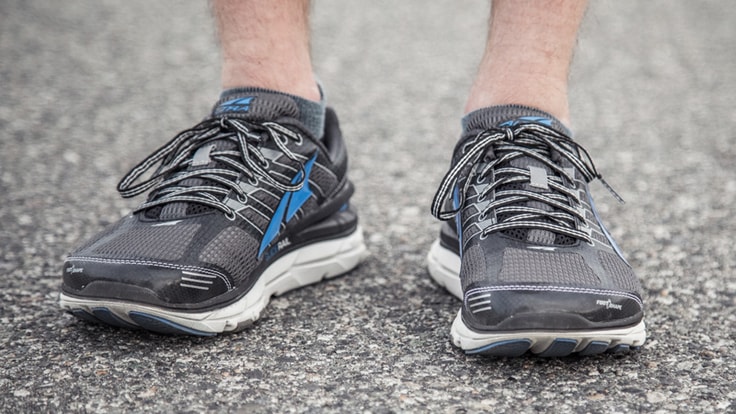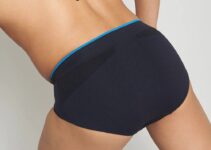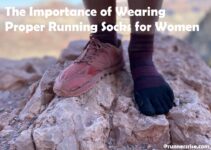Are you a runner looking for the perfect pair of shoes? Wearing the right shoes for the activity is essential to prevent injuries and optimize performance.
This guide outlines why neutral running shoes are important, helping you find the best pair for your run.
It is important for runners to understand the importance of neutral running shoes. Neutral shoes are designed to encourage a natural stride and reduce excessive force on the joints, muscles and ligaments. Since each runner has different biomechanical needs, runners should be aware of the benefits and characteristics of neutral running shoes in order to purchase a shoe that will provide adequate support for their feet.
This guide provides an overview of what to look for when selecting a neutral shoe, including considerations such as fit, motion control, cushioning and stability. In addition, common types of neutral running shoes will be discussed in detail. Finally, guidance will be provided on how often runners should replace their footwear in order to maintain proper support.
Definition of neutral running shoes
Neutral running shoes are designed to provide increased stability and cushioning for those who have a normal to high arches in their feet. Neutral running shoes also provide additional support for runners who require enhanced biomechanical support during the run.
Neutral running shoes have been designed with a variety of features that help accommodate runner’s needs from the heel, mid-foot, and toe to forefoot areas.
The majority of neutral running shoes contain technology that is specifically designed for shock attenuation and improved energy transfer from foot strike to push off. These features, in combination with additional stabilizing components such as firm rubber outsole materials or PU foam cushioned midsoles, promote an efficient stride and natural range of motion; all elements critical for a successful long-distance run or routine workout session.
The key advantages associated with neutral running shoes include: improved performance, enhanced cushioning comfort and longer lasting shoe lifespan. With this guide you will gain an understanding of how neutral running shoe design has evolved over time in order to provide cushioning while still allowing your stride to remain natural and efficient. Learn more about the great features found on modern day neutral running footwear so that you can make an informed decision when looking for your perfect pair!
Importance of wearing the right shoes for running
For the best running experience, a key factor is wearing the right shoes. Your shoes cushion and support your foot, allowing you to run with less stress on your joints and muscles. They also help create an aerodynamic balance, allowing you to be more efficient while running. It is essential to choose a pair of shoes that are fit for purpose, as they play a significant role in determining the success of your running performance as well as minimizing fatigue and preventing injuries.
When selecting running shoes, it is important to go for those with features that offer better flexibility, cushioning and stability. Shoes which are designed for motion control should be worn when running on hard surfaces such as asphalt or concrete roads to prevent excessive pronation – where the ankles roll inward – leading to increased shock absorption in the legs. It is also important to consider the type of terrain you will be running on: trail running shoes provide durability for rougher trails whereas track spikes can help increase speed; racing flats can provide lightweight traction whilst road marathons call for dedicated marathon shoes with superior outsole grips.
Another factor to take into account when choosing trail shoes is whether they are neutral or stability/motion control models – these have slightly different roles in providing cushioning and control over pronation or supination (when ankles roll outward). Neutral footwear provides maximum possible comfort whilst still maintaining effective flexibility by catering only for light pronation; stability/motion control models provide more rigid support throughout gait cycle when heavier levels of pronation or supination exist due to over-pronation syndromes like pes planus (flat feet) or pes cavus (high arched feet).
Ultimately, wearing properly fitting neutral or stability/motion control footwear can make all the difference both during training runs and races alike – so investing in good quality footwear from a trusted brand with appropriate features according to your needs should not be overlooked!
Benefits of Neutral Running Shoes
Neutral running shoes are a popular choice for runners, providing the appropriate cushioning and stability associated with running shoes while allowing for a more neutral and natural footstrike. They feature symmetrical levels of cushioning and support throughout the shoe, reducing stress on the feet and lower body while maintaining flexibility. This type of shoe is recognized as being beneficial to runners with medium to high arches, providing superior balance and comfort during long runs.
Neutral running shoes provide enhanced comfort by allowing your feet to move naturally in all directions, giving you the flexibility needed to nimbly navigate turns while still balancing your chances of injury. Their evolved design gives new levels of responsiveness which helps propel you further with each step, and they are also lighter than dedicated stability or motion control running shoes meaning you’re more likely to feel energized at any length of race without compromising your feet’s health and safety.
The cushioning in neutral runners offers increased protection from impacts between surfaces on all types of terrain, making them ideal for challenging runs outdoors when greater absorption is essential for reducing fatigue after an extended run. Neutral running shoes are extremely durable; the premium materials used in their construction help them stand up over time even in difficult circumstances such as uneven surfaces which can be more demanding on lesser quality shoes. With their ‘one size fits most’ versatility they also make an excellent choice if you regularly pick up different types of runs or alternate between disciplines such as trail-running or road-races as they offer useful versatility on both surfaces.
Reducing the risk of injury
Injuries due to running are very common, and often the result of incorrect footwear. In order to reduce your risk of injury, it’s important to choose neutral running shoes.
Neutral running shoes are designed with more flexible cushioning materials and provide minimal stability features that allow the foot to move in a natural motion. This helps to support the foot throughout its normal course when walking or running, reducing the amount of strain on the muscles and ligaments. Avoiding an unnatural range of motion can help reduce the risk of injury such as shin splints, plantar fasciitis and Achilles tendonitis.
Moreover, neutral running shoes also offer increased shock absorption due to their lightweight cushioning technologies. These shoes feature soft materials which help absorb impact during landing and reduce stress on joints whilst providing enough flexibility to guarantee energy return on takeoff.
Neutral shoes should also provide flexibility at both the heel and forefoot area in order to ensure that they are responding well to every stride as you run. They should also have a slightly curved sole that helps facilitate natural movement across different terrains, allowing for improved balance when going uphill or down uneven surfaces. Finally, ample arch support should be provided for those who need extra structural support during their runs.
Improving performance
For athletes and active individuals looking for enhanced performance and fewer injuries, the importance of having the right pair of shoes cannot be overemphasized. Selecting the perfect running shoe is an important decision that can make all the difference when it comes to performance, comfort, and safety. One type of shoe that is often overlooked is neutral running shoes.
Neutral running shoes are designed specifically to provide optimal cushioning while allowing your foot to move naturally. This means they do not come with extra cushioning or arch support like some other types of running shoes. While neutral running shoes are not usually recommended for those with pronation or supination issues, they can be used by those looking to improve their gait efficiency while reducing the risk of injury due to poor form or technique.
Neutral running shoes offer a variety of benefits including improved agility, better balance, and enhanced propulsion efficiency by allowing your foot to move exactly how it wants during each step. They are also lightweight and highly flexible so you can feel fast on your feet as you go about your run out on the track or road. Additionally, these types of shoes provide just enough shock-absorption inn order to keep bare feet safe from impact-related injuries over long distances or harder surfaces.
Finding a pair of high-quality neutral running shoes that match properly with a properly fitting sock will help ensure improved performance no matter what level athlete you are. Runners who wear their proper size in Neutral Running Shoes can experience a greater levelof comfort that translate into better performance over time – making days where distance seems more achievable than ever before possible!
Enhancing comfort and support
The importance of wearing running shoes that provide complete cushioning and support cannot be overstated. Wearing such shoes not only protects your feet against the shock and pressure of running but also helps you achieve a neutral gait with every stride. By understanding the essential features of good running shoes with enhanced comfort and support, you can ensure that you choose the right pair to keep your feet safe while still enjoying a great running experience.
Good cushioning is one of the key features of any runner’s shoe. Cushioned runners should provide enough comfort and shock absorption to prevent injury during continuous pounding on the pavement. Look for runners that have lightweight materials such as EVA midsoles, air-cushioned footbeds, or a combination of both.
In addition to good cushioning, look for runners that provide ample arch support. Optimal arch support will help stabilize your feet every time you hit the ground—particularly if you plan on trail or off-road running—thereby helping reduce fatigue over long distances. An excellent way to test for sufficient arch support is to press down slightly on the midsole with your thumb; if it contours nicely around your arch area then it should be adequate.
Shock-absorbent midsoles are also integral in preventing injury during long-distance runs or when running on hard, unforgiving surfaces like asphalt or concrete roads. A well-crafted midsole will absorb most impact forces, allowing your joints and muscles to stay relaxed during runs for greater endurance and better performance over long distances as well as decreased risk for injuries due to muscle fatigue and impact forces caused by frequent footstrikes against hard surfaces.
Finally, make sure that your neutral running shoes fit correctly; they should be snug but not tight around each part of your foot without causing any pain or discomfort while running. Having a custom fitting in store may attract extra costs, but it will certainly give you optimal comfort throughout each run and help keep you safe from common stress fractures associated with poorly fitting footwear during high-impact runs on hard surfaces.
Factors to Consider When Choosing Neutral Running Shoes
Before you decide on your perfect neutral running shoe, there are some basic factors to consider. Taking into account the characteristics of your foot and the type of workout you’re participating in will help you find a comfortable and effective fit. Here’s what to keep in mind when shopping for neutral running shoes:
- Foot shape: Ensure that the shoes accommodate your particular foot shape, such as a wide or narrow width and arch type (high, medium or low). This will help ensure a natural gait cycle and reduce potential injury risk due to overpronation or oversupination with each step.
- Heel height: Select shoes with an appropriate heel height that minimizes stress on the feet while providing enough cushioning and support to do away with fatigue while running.
- Breathability: Make sure to choose neutral running shoes with enough breathability to allow for adequate airflow into and out of the shoe, which can prevent heat build-ups for all-day comfort during long runs and work-outs.
- Material: Good quality synthetic materials that are both durable and flexible are key elements in finding longer lasting shoes made from quality materials that can provide support throughout workouts or races without becoming rigid overtime.
- Intended Activity: If a runner plans on participating in structured activities like yoga or spin classes where agility is important their preferred shoe should include features geared towards greater maneuverability with maximum stability during constant lateral movements as opposed to more basic models better suited only for trail jogging or light speed walking.
Arch type
When it comes to running shoes, there are certain key elements that are important for giving you the perfect fit and ensuring that your shoes provide the support your feet need. Choosing the right type of shoe for your feet depends on several factors, such as your foot shape and size, body type, running style and any underlying medical conditions.
One of the most important determinants when buying running shoes is the arch type of the wearer’s foot – specifically whether it is low or high. Neutral running shoes are designed to offer cushioning and stability to those with slightly high arch types, through their combination of lightness, flexibility and dynamic cushioning.
Low arches: Those with low arches will tend to pronate (the inward rolling of the foot) more than those with normal or high arches. This can result in excessive stress being placed on other areas of the feet such as ankles, hips or even lower back. Individuals with this type of foot should look for stability running shoes that offers guidance and support during pronation.
High arches: If you have an arch that sits well above average then it’s likely that you underpronate (under- rotate) while running or walking which can cause discomfort on either side of your foot or joints in lower leg region due to lack of shock absorption from under-rotation. Neutral running footwear has been designed with a cushioned midsole to provide effect shock absorption in order protect against over-pronation and ensure comfort.
Foot shape and size
The type of running shoe you choose should be based on the shape and size of your foot. Your feet can be wide, narrow, or in between and the shoe should fit snugly. When standing up, there should not be any pressure points at all.
If your feet are wide, you may want to look for shoes with a wider toe box or cushioning to accommodate them. Likewise, if your feet are very slim and long, look for a shoe with a tighter fit to prevent sliding while running.
It’s best to get properly fitted either at a specialty store or by an expert who have experience in finding the right size and shape for you so that your shoes can provide maximum comfort while working out.
Running style and gait
Running style and gait are two of the most important determinants of the type of running shoe you need. Every runner has different running biomechanics, which is a fancy way of saying that everyone moves differently. Your running style and gait can vary based on your stride angle, stride length, and footstrike landing area.
The most common gait traits are heel strike (landing on the heel first), mid-foot strike (landing on the middle part of the foot first), and forefoot strike (landing on the front part of the foot first). While there is no single “correct” way to run, each style requires different types of shoes in order to remain injury-free.
Heel strikers should seek out shoes with cushioning to absorb shock at impact. Heel strikers tend to experience more impact force than other runners since their feet land harder; shoes with cushioning help reduce this impact force by dispersing it away from vulnerable muscles, joints, and bones.
Mid-foot strikers should look for shoes that offer flexibility for maximum mobility during their runs. Mid-foot strikers typically move their feet quickly from side-to-side in order to maintain forward momentum; therefore, they may benefit from a flexible sole so they don’t feel restricted while running.
Forefoot strikers need shoes that provide light cushion for minimal resistance when gripping surfaces as they hit pavement with each step. Forefoot striking puts increased pressure on ankle joints as well as ligaments between bones; choosing a shoe with just enough cushion will help protect these areas without affecting performance or speed.
Understanding your own individual physiology—including range of motion test results—can help increase accuracy when selecting running shoes based on your gait type, footstrike pattern and size needs all playing a factor when finding a suitable neutral running shoe that can provide comfort during your runs while also keeping your feet healthy and injury-free longterm!
Cushioning and support
A good pair of neutral running shoes is designed to provide optimal cushioning and support for your feet during exercise. By providing additional heel, arch, and midsole cushioning, these shoes help to reduce the amount of shock and strain placed on your joints while running or performing other activities. Additionally, they also work to balance out the pressure on different parts of your feet and keep them from slipping within the shoes. For this reason, many athletes prefer a neutral running shoe over a more traditional one.
When selecting a pair of neutral running shoes for yourself, it’s important to consider how much cushioning and support you need both in the shoe’s upper (the part that fits around your foot) as well as its midsole (where most of the cushioning lies). Additionally, you should pay attention to the amount of stability and flexibility offered by a particular shoe; this is especially important if you are likely to need more movement than what traditional athletic footwear provides. Ultimately, it’s important to select a pair based on your individual needs so that they can provide adequate shock absorption while offering enough flexibility for comfortable movement during activity or exercise.
Conclusion
When choosing a running shoe, it is important to keep in mind one’s individual foot type and any existing medical conditions or injuries. It may be helpful to consult a medical professional or shoe fitting specialist to ensure that the best, most comfortable, and most appropriate shoe is chosen. Neutral running shoes are a popular choice for both beginner and elite runners as they are designed to optimize foot alignment while providing ample cushioning and support.
For those considering purchasing a neutral running shoe, consider the following criteria: arch type and fit as well as motion control technology if necessary. Many neutral shoes have further features such as stability straps and forefoot flex grooves for increased flexibility. The weight of the shoe should also be taken into consideration based on what surfaces the runner typically runs on. With the knowledge gained from researching the abovementioned criteria, choosing a neutral running shoe should be easy for any individual based on personal preference and requirements.
FAQ’s
Why wear neutral running shoes?
Neutral running shoes offer a balanced amount of cushioning and support, making them suitable for runners with a neutral gait.
How do you know if you need a neutral running shoe?
You can determine whether you need a neutral running shoe by getting your gait analyzed by a professional or by looking at the wear pattern on your current running shoes.
Can anyone wear neutral running shoes?
Neutral running shoes are designed for runners with a neutral gait, but some runners with mild overpronation or underpronation may also be able to wear them.
Are neutral running shoes good for flat feet?
Neutral running shoes may not provide enough support for flat feet, which require more arch support.
Do neutral runners need arch support?
Neutral runners typically do not require as much arch support as those with flat feet or overpronation.
What is the difference between a stability shoe and a neutral shoe?
Stability shoes provide extra support for overpronation, while neutral shoes are designed for runners with a neutral gait.
Is a neutral running shoe good for overpronation?
Neutral running shoes may not provide enough support for severe overpronation, but some runners with mild overpronation may be able to wear them.
What is neutral vs overpronation?
Neutral refers to a normal gait pattern where the foot rolls inward slightly upon impact, while overpronation occurs when the foot rolls excessively inward, causing potential injury.
What is a neutral running shoe?
A neutral running shoe is a type of running shoe designed for runners with a neutral gait, providing a balanced amount of cushioning and support.
What type of feet are neutral?
Neutral feet have a normal arch and roll inward slightly upon impact, resulting in an even distribution of weight across the foot.
See Also-
- Best running hydration vests
- Best stability running shoes for women
- Best running shirts for men
- Best under armour running shoes
- Best running shoes for achilles tendonitis


